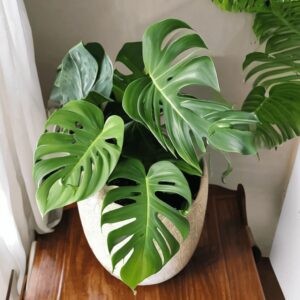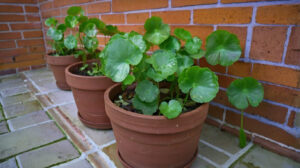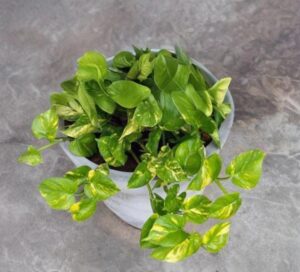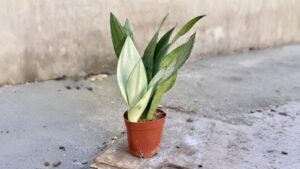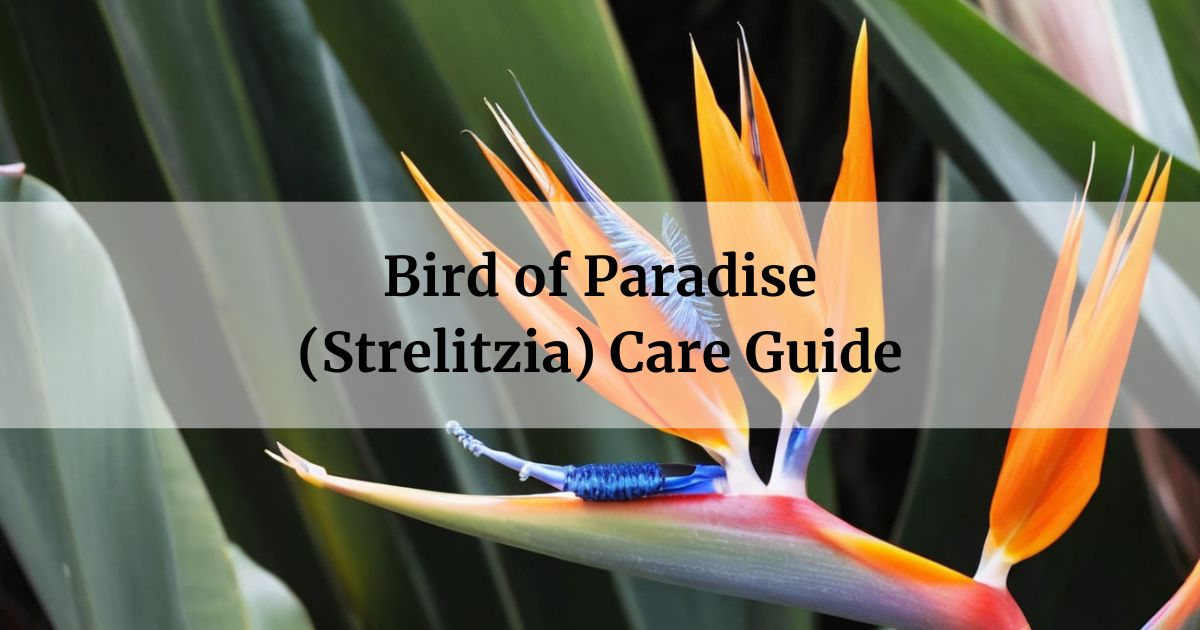
With its dramatic heart-shaped leaves and waxy blooms, the Bird of Paradise plant (Strelitzias) is a showstopper in any collection. Though these tropical beauties look high-maintenance, I’ve found them to be quite forgiving when given the right conditions. Their eye-catching foliage and flowers add unique flair, perfect for sprucing up a kitchen or powder room. With some humidity loving and infrequent watering, you can enjoy their splendor indoors all year round.
- Pros
- Stunning waxy blooms
- Tropical flair
- Easy care
- Cons
- More demanding of light and humidity than some houseplants
In this article
- 1 Appearance of Strelitzias
- 2 Humidity and Temperature
- 3 Toxicity Level of Strelitzias
- 4 Light Requirements for Strelitzias
- 5 Watering Strelitzias
- 6 Fertilizing Strelitzias
- 7 Potting Strelitzias
- 8 Growth and Development of Strelitzias
- 9 Managing Pests and Diseases for Strelitzias
- 10 Complimentary Plants with Strelitzias
Appearance of Strelitzias
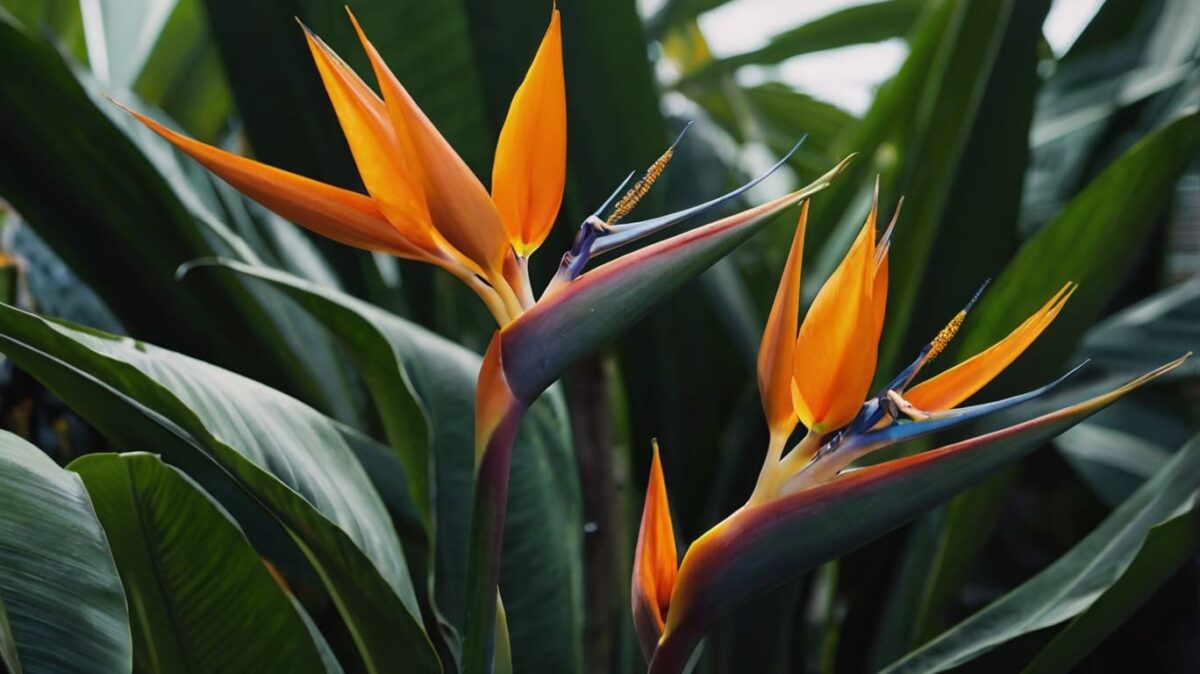
Strelitzias have large, glossy heart or arrow-shaped leaves that can reach up to 12 inches long. Their unique spathe and spadix flower structure resembles waxy blooms in shades of red, pink, or white. These classic tropicals add a dramatic accent to any space. Their sculptural foliage and interesting blooms are guaranteed conversation starters!
- Leaves: Heart or arrow-shaped, glossy, up to 1 foot long
- Flowers: Unique waxy bloom (spathe and spadix) in red, pink, white
- Size: Leaves and flowering stalks up to 3 feet tall
There are five main species of Bird of Paradise plants (Strelitzia):
- Strelitzia reginae – This is the most common and popular variety, known for its bright orange and blue flowers that resemble a bird in flight.
- Strelitzia nicolai – Also known as the White Bird of Paradise, this variety can grow up to 30 feet tall and has white and blue flowers.
- Strelitzia alba – This is another white-flowered variety, sometimes called the Giant White Bird of Paradise.
- Strelitzia juncea – The Narrow-leaved Bird of Paradise has reed-like leaves and slightly smaller orange and blue flowers compared to S. reginae.
- Strelitzia caudata – This variety mainly grows wild in southern Afric
Great for People who:
Enjoy growing tropical plants. Strelitzias, especially the Strelitzia nicolai variety, have a tropical appearance with large banana-like leaves and a palm-like growth habit. Some Strelitzia species, like S. nicolai, can grow very large, up to 12m tall and 4m wide, and may not be suitable for small gardens. Strelitzias are relatively easy to grow, tolerating drought once established, and only needing regular watering when young.
Great for these Spaces:
Strelitzias thrive in bright, indirect light, making them suitable for well-lit rooms. A south or west-facing window is ideal, as they can benefit from several hours of sunlight without being scorched by direct rays. These plants enjoy warm temperatures and can flourish in conservatories where they can receive ample light and humidity. They prefer temperatures between 21°C-30°C (70°F-86°F) and can tolerate slightly cooler conditions.
RELATED: My Top 5 Beautiful Houseplants
Humidity and Temperature
Strelitzias thrive in warm, humid environments. They prefer temperatures between 21°C-30°C (70°F-86°F) and can suffer if exposed to cold drafts or temperatures below 15°C (59°F). Maintaining humidity levels is crucial, especially in dry indoor environments; misting the leaves or using a pebble tray can help.
Toxicity Level of Strelitzias
Most sources indicate that Strelitzia plants are considered minimally toxic. Symptoms from ingestion are typically mild and may include gastrointestinal upset such as vomiting and diarrhea, especially in pets like dogs and cats. If pets ingest parts of the Bird of Paradise, they may exhibit symptoms such as nausea, vomiting, diarrhea, increased heart rate, and incoordination. The fruit and seeds are particularly toxic, and prompt veterinary attention is recommended if ingestion occurs.
For humans, contact with the plant’s sap can cause skin irritation, and ingestion can lead to nausea and gastrointestinal distress. It is advisable to handle the plant with gloves to avoid any adverse reactions.
Light Requirements for Strelitzias
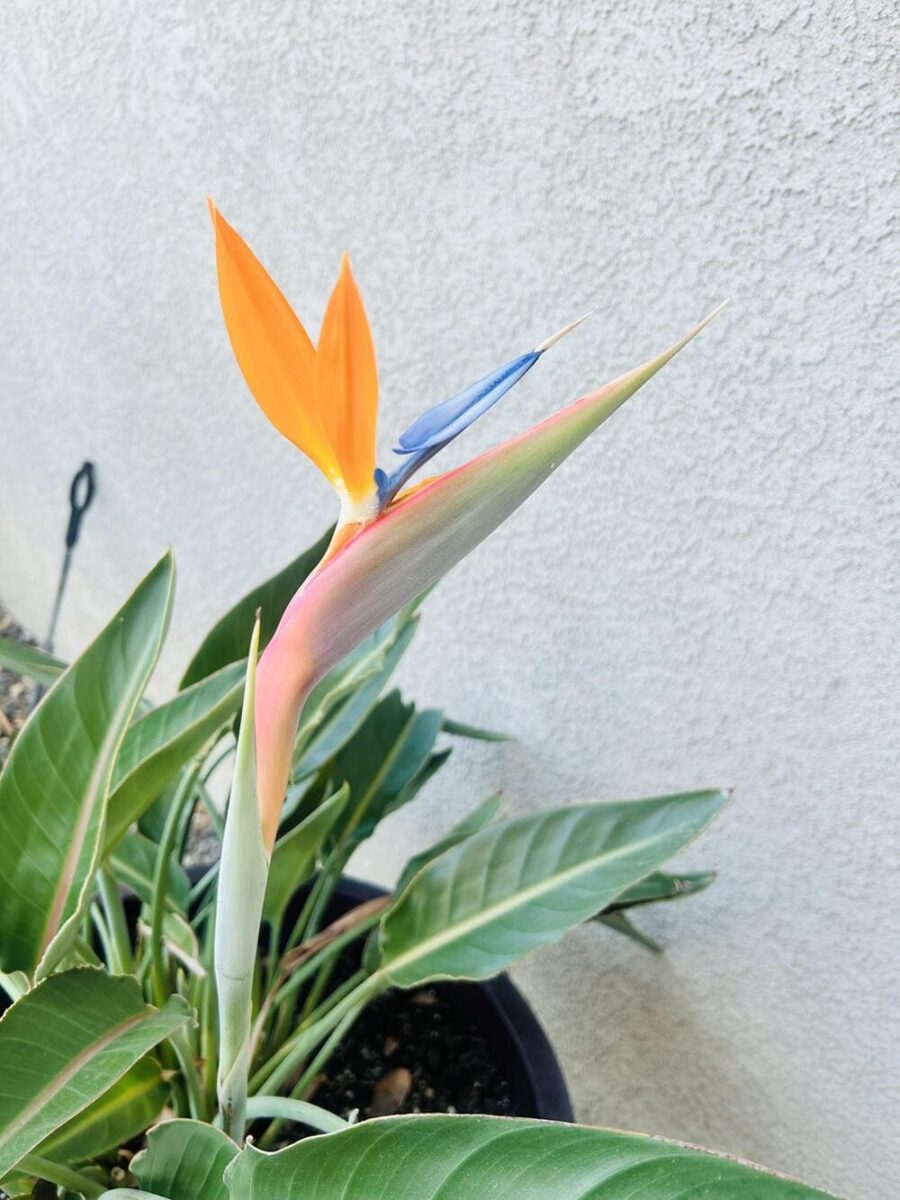
Strelitzia plants thrive in specific light conditions that mimic their natural habitat. They flourish in bright, indirect light, which is essential for their overall health and growth. While they can tolerate some direct sunlight, too much exposure can lead to leaf burn, especially during the hottest parts of the day. Therefore, placing them near a window that receives filtered light is ideal.
Natural Light Requirements
In their natural environment, Strelitzia plants grow under the canopy of taller trees, receiving dappled sunlight. To replicate this, it’s best to position them near south or west-facing windows where they can enjoy several hours of bright, indirect light. During the summer months, it may be necessary to shield them from intense afternoon sun to prevent scorching.
Grow Lights Requirements
For indoor growers who may not have access to sufficient natural light, using grow lights can be an effective solution. Full-spectrum LED grow lights are recommended as they provide the necessary wavelengths for photosynthesis. Position the grow lights about 12-24 inches above the plants, ensuring they receive around 12-14 hours of light per day to promote healthy growth and flowering.
| Light Conditions | Effect on Plant |
|---|---|
| Bright Indirect Light | Promotes healthy growth and flowering |
| Low Light | Causes leggy growth and poor flowering |
| Direct Sunlight | Can scorch leaves and hinder plant health |
Watering Strelitzias
Strelitzias are quite thirsty and require generous watering. During the growing season (spring and summer), water them at least once a week. Allow the top layer of soil to dry out slightly between waterings.
Stick your finger into the soil up to the second knuckle – if it feels dry, it’s time to water again. Use room temperature water as cold water can shock the plant. Water thoroughly until water runs out the drainage holes at the bottom of the pot. Don’t let the plant sit in water
Fertilizing Strelitzias

Jack’s Classic All Purpose 20-20-20 Water Soluble Plant Food (1.5lbs)
Fertilizing Strelitzias is essential for promoting healthy growth and vibrant blooms. These tropical plants benefit from a balanced fertilizer that provides the necessary nutrients during their active growing season, which typically spans from spring through summer. During this period, Strelitzias require more nutrients to support their lush foliage and the development of their iconic flowers. A well-balanced, water-soluble fertilizer can help to ensure that the plants receive adequate nourishment, enhancing their overall vigor and resilience.
To maintain optimal health, it’s important to adjust the fertilization schedule according to the seasons. During the spring and summer months, when the plant is actively growing, more frequent feeding is beneficial. In contrast, during the fall and winter months, when growth slows, reducing fertilization is advisable. By following a consistent fertilization routine, you can help your Strelitzia thrive and enjoy its stunning display of flowers for years to come.
Fertilizing Guidelines
- Use a balanced, water-soluble fertilizer with an NPK ratio of 20-20-20 or similar.
- Fertilize every 2-4 weeks during the growing season (spring and summer).
- Reduce fertilization frequency to once a month during the fall.
- Avoid fertilizing during the winter months when the plant is dormant.
- Always water the plant before applying fertilizer to prevent root burn.
| Month | Recommended Dosage |
|---|---|
| Spring (March-May) | Every 2-4 weeks |
| Summer (June-August) | Every 2-4 weeks |
| Fall (September-November) | Once a month |
| Winter (December-February) | No fertilization |
Potting Strelitzias
Potting Mix
- Use a well-draining, nutrient-rich potting mix. A good recipe is:
- Avoid dense, heavy potting mixes as they can lead to waterlogging and root rot.
- Include amendments like perlite, orchid bark, or peat moss to improve drainage and aeration.
Pot Size
- Strelitzias prefer to be slightly pot-bound. Avoid using a pot that is too large.
- When repotting, only increase the pot size by 5-7 cm in diameter. Going too large can inhibit flowering.
- Use a pot with drainage holes to allow excess water to escape.
Repotting
- Repot in spring or summer during the active growing season.
- Mature plants can be repotted every 2-3 years. Younger plants may need more frequent repotting as they grow.
- Be careful when repotting as it can cause the plant to skip a flowering cycle.
- Avoid planting too deeply. The crown of the plant should be at soil level.
Drainage
- Ensure good drainage by adding a layer of gravel, rocks or broken pot shards to the bottom of the pot.
- This prevents waterlogging and root rot.
So in summary, use a well-draining potting mix, choose a pot that is not too large, and repot in spring/summer every 2-3 years for best results. Proper potting is key to keeping Strelitzias healthy and promoting flowering.
Propagation of Strelitzias
Propagating anthuriums allows creating more statement blooms! In spring or summer, remove plantlets or “pups” growing from the mother plant and pot individually. Care for airy plantlets as you would a mature plant until they develop their own roots systems and leaves. Water propping is also effective – simply root stem cuttings in water until sprouting roots.
- Remove “pups” from mother plant in spring/summer
- Pot plantlets, care for as miniature anthuriums
- Root stem cuttings in water
Growth and Development of Strelitzias
Strelitzias typically undergo several growth stages. Initially, young plants exhibit a distichous growth pattern, where leaves emerge in two ranks. As the plants mature, they begin to offset, forming clumps and expanding in size. Depending on the species, Strelitzias can take anywhere from three to five years to reach maturity and produce flowers, with some varieties taking even longer.
Managing Pests and Diseases for Strelitzias
Common Pests
- Whiteflies – Sap-feeding insects that can spread rapidly. Introduce parasitic wasps or use insecticidal soaps/oils.
- Aphids – Suck plant juices and excrete honeydew. Wash off with water or use insecticidal soaps.
- Spider mites – Look for fine webbing on undersides of leaves. Increase humidity and use miticides if needed.
Common Diseases
- Damping off – Fungal disease that kills seedlings. Caused by overwatering, poor drainage, or high humidity. Improve soil drainage and reduce watering.
- Leaf spots – Various fungal diseases that cause spots on leaves. Prune affected leaves and improve air circulation.
- Bacterial rots – Can cause stem or crown rots. Improve drainage and reduce watering. Prune out affected areas.
Treatment
- Remove affected plant parts if possible to prevent spread. Prune out diseased leaves, stems or roots.
- Use biological controls like parasitic wasps or beneficial nematodes for soil pests.
- Insecticidal soaps or oils can be effective against soft-bodied insects like aphids and whiteflies.
- Fungicides may be needed for severe fungal diseases but are not always effective once established. Prevention is key.
The best approach is to maintain healthy, vigorous plants through proper care and sanitation. Monitor regularly and address any issues promptly before they become major problems.
Complimentary Plants with Strelitzias
Frequently asked questions
Should I cut off old flower spikes?
Yes, removing spent flower spikes encourages reblooming from the same stem or new growth points.
How long do blooms last?
Individual blooms typically last 2-6 weeks. Continual new blooms arise with optimal care.
Mine isn’t flowering. What should I check?
Evaluate light, humidity, and fertilizing. Six+ hours of bright indirect light and frequent misting encourages bloom production.
With their lush foliage and colorful blooms, Strelitzias are worthwhile additions for plant enthusiasts. Though appearing fussy, they prove quite resilient to the average home’s conditions. Simple adjustments provide ideal tropical vibes indoors. Why not expand your collection through propagules to showcase more of their appeal? I’m sure you’ll enjoy their unique beauty for seasons to come.

